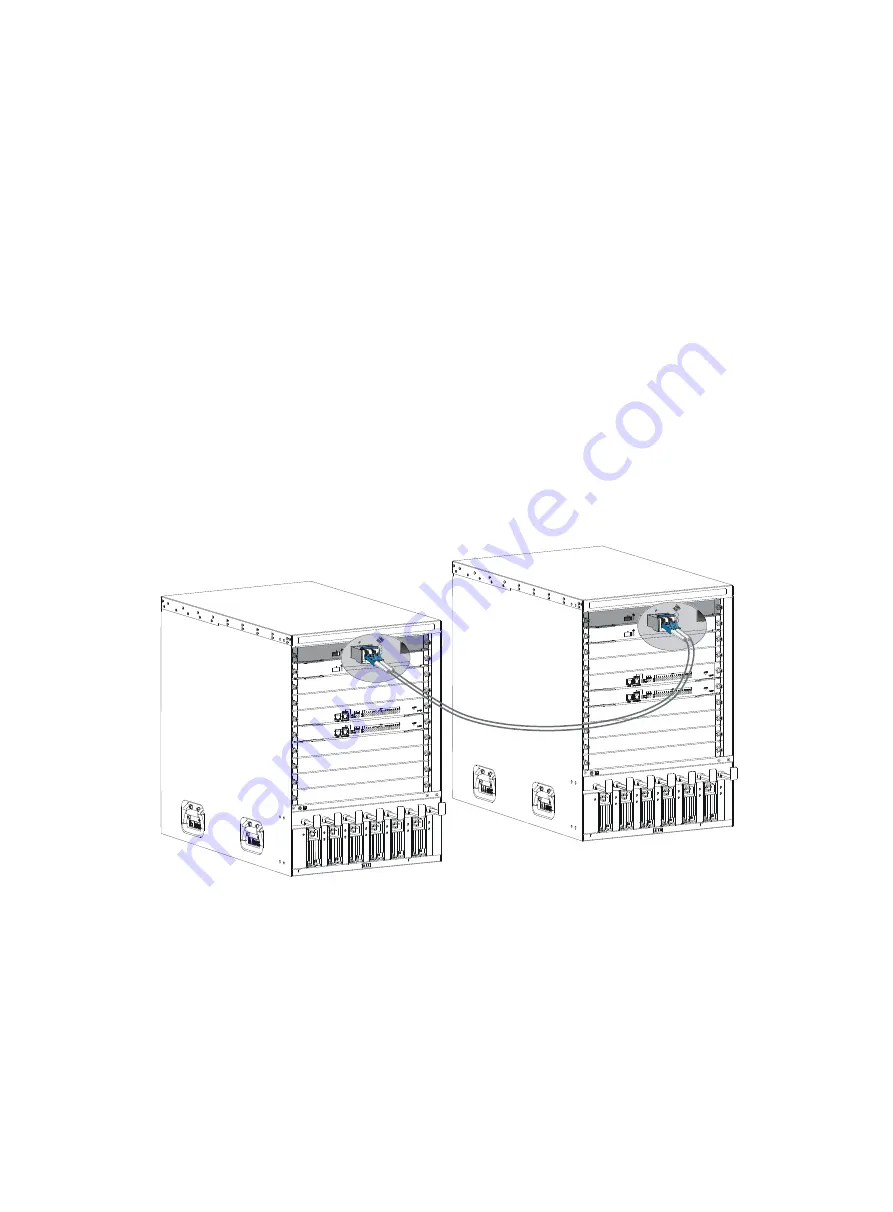
30
•
Execute the
display irf configuration
command to verify the basic IRF settings.
For more information about configuring basic IRF settings, see
IRF Configuration Guide
.
Connecting the physical IRF ports
Follow these guidelines when selecting transceiver modules and cables:
•
Use XFP transceiver modules and fibers to connect XFP ports.
•
Use SFP+ transceiver modules and fibers for long-haul connection, or use SFP+ cables to connect
SFP+ ports for short-haul connection.
•
When connecting XFP/SFP+/CFP ports, connect the transmit port of an XFP/SFP+/CFP transceiver
module at one end to the receive port of an XFP/SFP+/CFP transceiver module at the other end.
•
Use QSFP+ transceiver modules and fibers for long-haul connection, or use QSFP+ cables to
connect QSFP+ ports for short-haul connection.
•
Use CFP transceiver modules and fibers to connect CFP ports.
•
The transceiver modules at the two ends of an IRF link must be of the same type.
For more information about installing transceiver modules, see "Installing FRUs." For more information
about connecting fibers, see "Connecting your switch to the network."
Figure 23
Connecting two IRF member switches
Verifying the IRF fabric configuration
After you finish configuring basic IRF settings and connecting IRF ports, verify the basic functionality of
the IRF fabric, as follows:
1.
Log in to the IRF fabric through the console port of any member switch.
2.
Create a Layer 3 interface, assign it an IP address, and make sure the IRF fabric and the remote
network management station can reach each other.
Содержание S7508E-X
Страница 8: ...iv Index 102...






























